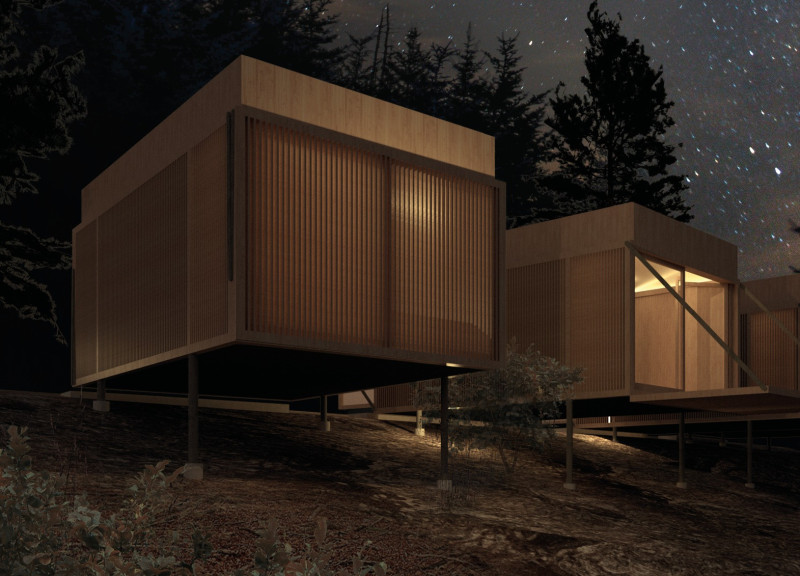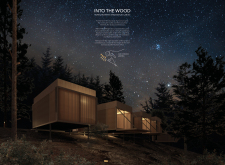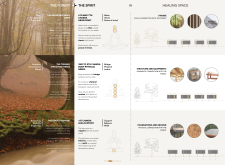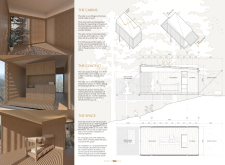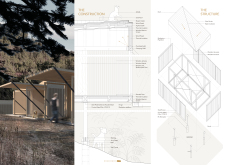5 key facts about this project
The cabins serve multiple functions, including spaces for individual and group meditation, wellness activities, and personal retreat. They are engineered to facilitate an engaging interaction between occupants and the surrounding ecosystem, making use of the natural landscape to enhance the user experience. The architectural approach employs sustainable practices, utilizing locally sourced materials and minimizing environmental impact.
Unique Design Approaches in Architectural Integration
The design distinguishes itself through a novel incorporation of natural elements into the structure. Elevated on slender supports, the cabins appear to float above the ground, creating minimal disturbance to the forest floor. This not only preserves the ecological integrity of the site but also enhances the overall aesthetic appeal. The design utilizes **Valea de Moises wood** for primary structural elements, ensuring both durability and a visual connection to the forest environment.
The layout includes open spaces that can be adapted for various activities, with modular configurations allowing for flexibility in use. Large windows direct views towards scenic elements in the landscape, encouraging occupant engagement with the surroundings. Integration of solar panels and rainwater management systems reflects a commitment to sustainability, aligning with contemporary architectural ideas that prioritize ecological responsibility.
Architectural Detailing and Material Selection
Attention to detail is paramount in the construction of these cabins. Each unit features wooden facades, which complement the natural surroundings while providing essential thermal insulation. The project emphasizes functionality alongside aesthetics, with cleverly designed storage solutions that maintain cleanliness without sacrificing design integrity.
Additional materials include circular metal pillars for support, metal gutters for effective rainwater management, and various types of thermal insulation to ensure energy efficiency. This selection of materials underscores the project’s dedication to blending practicality with a connection to nature.
For further insights, readers are encouraged to explore the project presentation, including detailed architectural plans, sections, and designs, for a comprehensive understanding of how these elements coalesce. The thoughtful integration of architectural ideas within the “Into the Wood” project illustrates a nuanced approach to design that seeks to harmonize human experience with the natural world.


